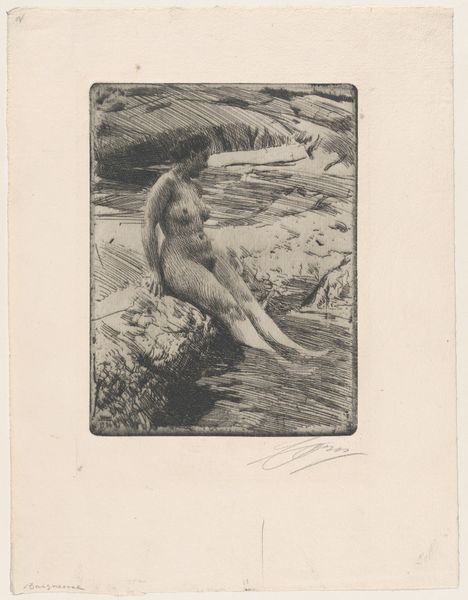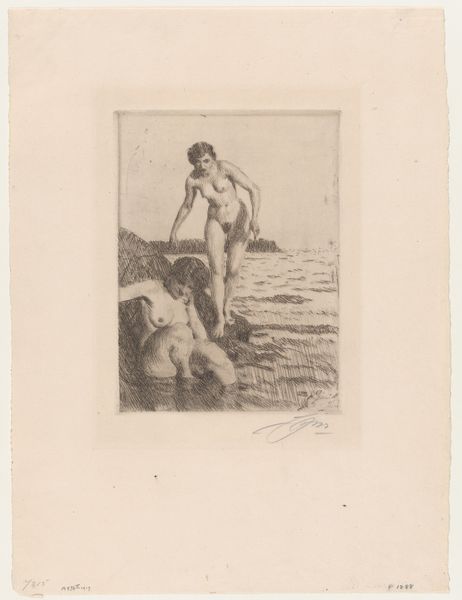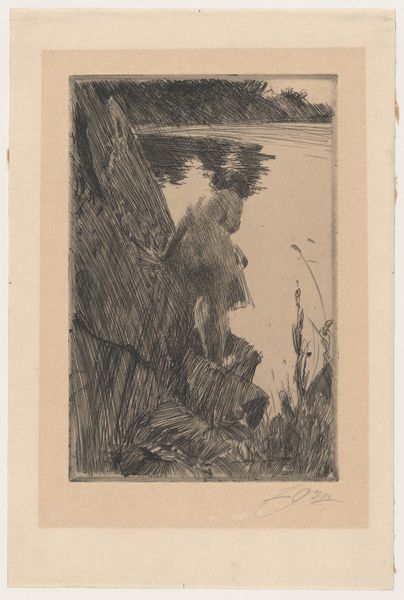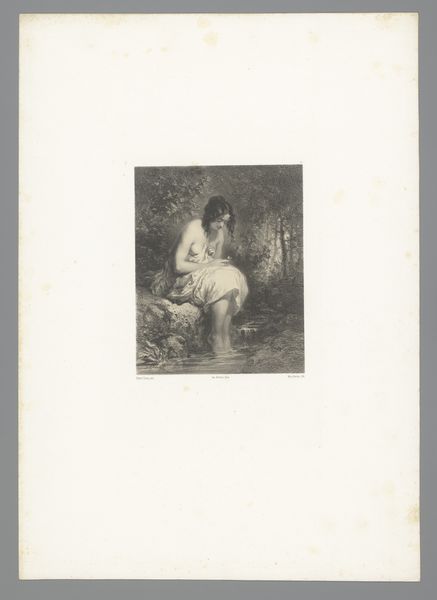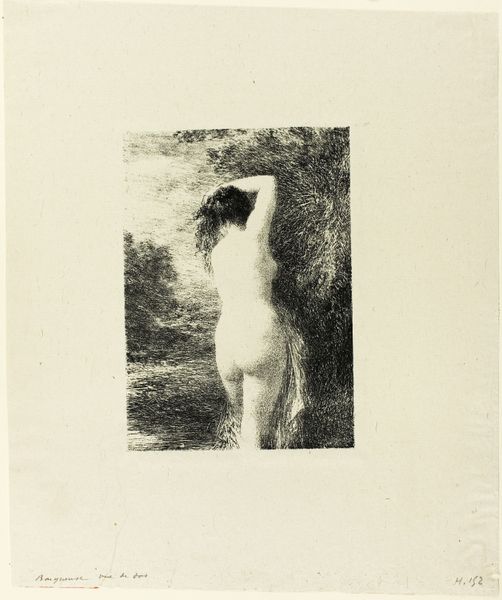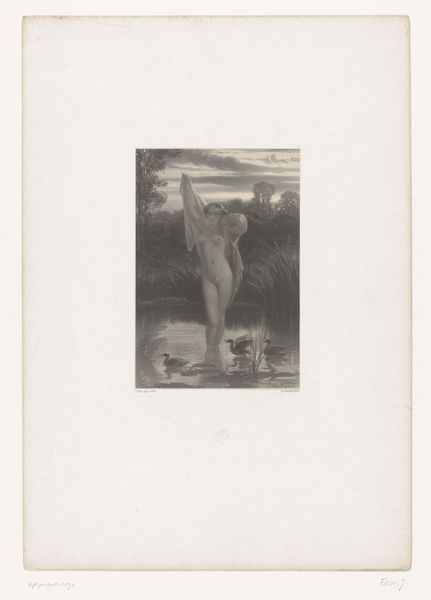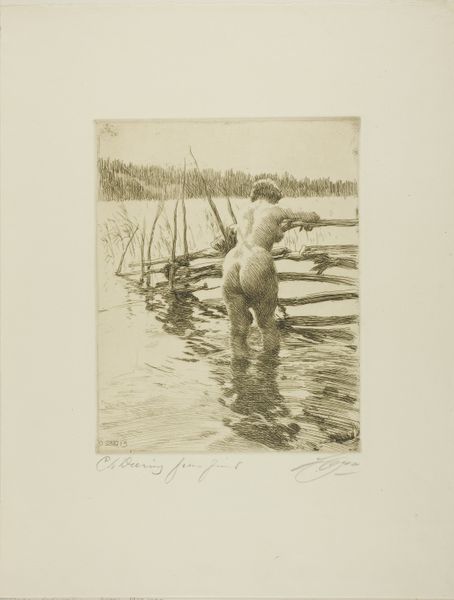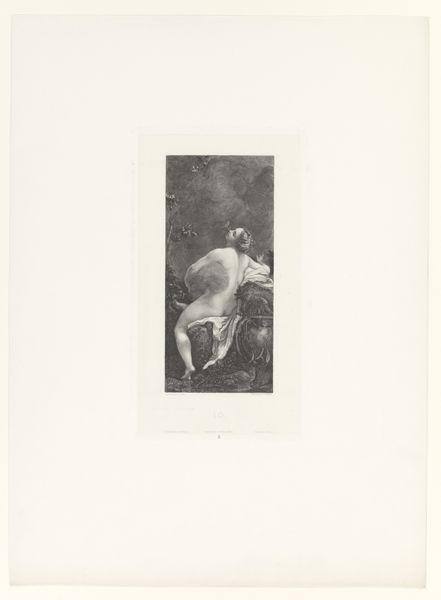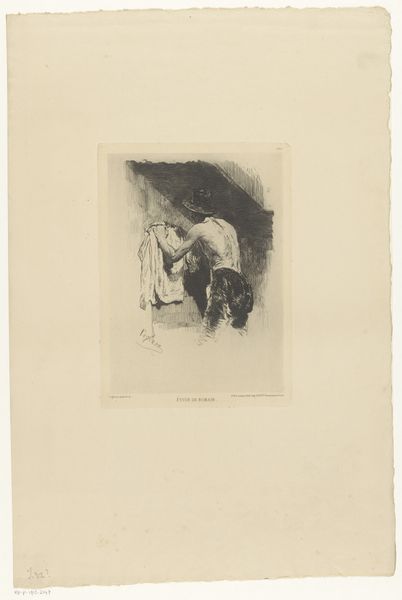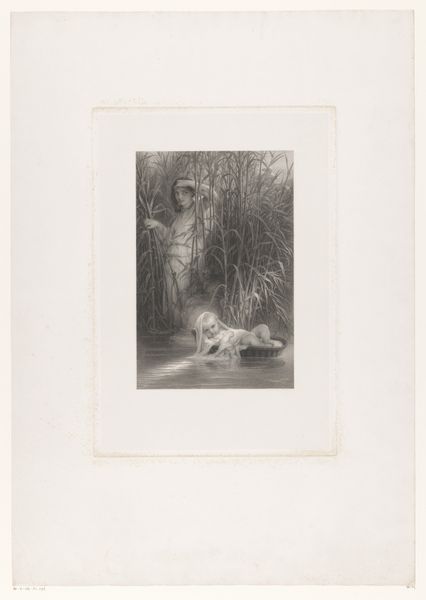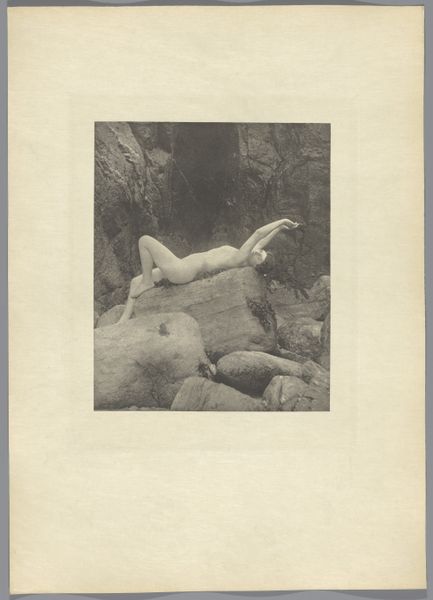
Dimensions: Plate: 6 1/2 × 4 9/16 in. (16.5 × 11.6 cm) Sheet: 12 3/8 × 9 1/4 in. (31.4 × 23.5 cm)
Copyright: Public Domain
Curator: Anders Zorn’s etching, "Balance," created in 1919, presents a scene of two nude figures wading in water. It’s currently part of the collection at the Metropolitan Museum of Art. Editor: It feels remarkably candid, doesn't it? Almost like a captured moment, a fleeting glimpse. The use of line is striking, conveying movement and light, but with an undercurrent of tension. Curator: The intaglio etching process Zorn employed allowed for that incredible detail. Consider the labor involved in creating the plate, each line meticulously etched to hold the ink. His ability to mimic the effects of plein air painting with etching needles is masterful. It reminds me of debates at the time: was printmaking craft, or could it aspire to "high art"? Zorn definitely pushed the boundaries. Editor: Indeed, it feels almost rebellious, in a subtle way. Look at the woman's gesture, arm outstretched, as if beckoning, or perhaps warding off. To me, this pose signifies vulnerability and strength in equilibrium. We see how cultural associations of the nude figure carried weight and varied depending on the place in that time. Curator: Absolutely, and thinking of balance in literal terms, you see how the two figures' poses contribute to the visual stability of the work. Zorn seems interested in capturing something beyond just the form but also the textures. This paper’s surface allows for great visual contrast. Editor: And that contrast further reinforces the sense of duality—the tension between safety and danger, the known and the unknown. The symbol of the nude, often used to express purity or vulnerability, here carries a more ambiguous weight. It invites you to contemplate a lot of things. Curator: Reflecting on it all, this is really such a layered piece. From its production using traditional etching methods to its final manifestation of Zorn's Impressionistic-informed, modernist aesthetic and capturing human dynamism in what many might simply describe as a waterside. Editor: Ultimately, Zorn has produced a composition about psychological as much as physical equipoise. I find myself strangely compelled to step further into the scene he created, and that emotional resonance is where I locate lasting value.
Comments
No comments
Be the first to comment and join the conversation on the ultimate creative platform.

